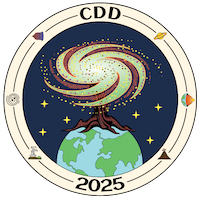Orateur
Description
The magmatic upper crust is generally divided into Layer 2A and Layer 2B, where Layer 2A is interpreted to consist of lava flows and Layer 2B of dikes, although hydrothermal alteration processes have also been suggested to define the Layer 2A/2B boundary. Using 3D seismic reflection method at the Axial Volcano in the Eastern Pacific, we have recently imaged > 3 km of layered lava flows that dip inwards towards the rift zone and interact with the axial melt lens, hence indicating the absence of a dike sequence. These images also show the injection of melt sills within the lava pile. However, the conventional stacking of wide-angle data (triplication associated with the high velocity gradient zone at the base of Layer 2A) indicates that a classical Layer 2A/2B boundary can be defined in our study area. Here, we present results of seismic full waveform inversion applied to ultra-long offset (12 km) multi-channel seismic data collected in 2019 during the same survey that yielded the 3D seismic reflection results. In our high-resolution P-wave velocity section and associated velocity gradient section we find layered structures consistent with the 3D seismic image. We also find (1) a low-velocity layer in the upper part, evocative of Layer 2A, (2) a high-velocity gradient zone underlain by (3) a high-velocity but low-gradient zone (similar to Layer 2B) underneath, all within the imaged thick lava pile. We suggest that the uppermost lava flow layer consists of hydrated lava flows whereas the lower layer has undergone dehydration and metamorphism and has been formed by the interaction of lava flows with melt bodies and injected sills. Thus the classical Layer 2A/2B boundary would correspond to the boundary between hydrated and dehydrated lava flows. Our results suggest that the upper oceanic crust is formed by lava flows and their interactions with melt-sills, which resolves the long-standing debate about Layer 2A/2B boundary.
| Speaker information | PhD 2nd year |
|---|

